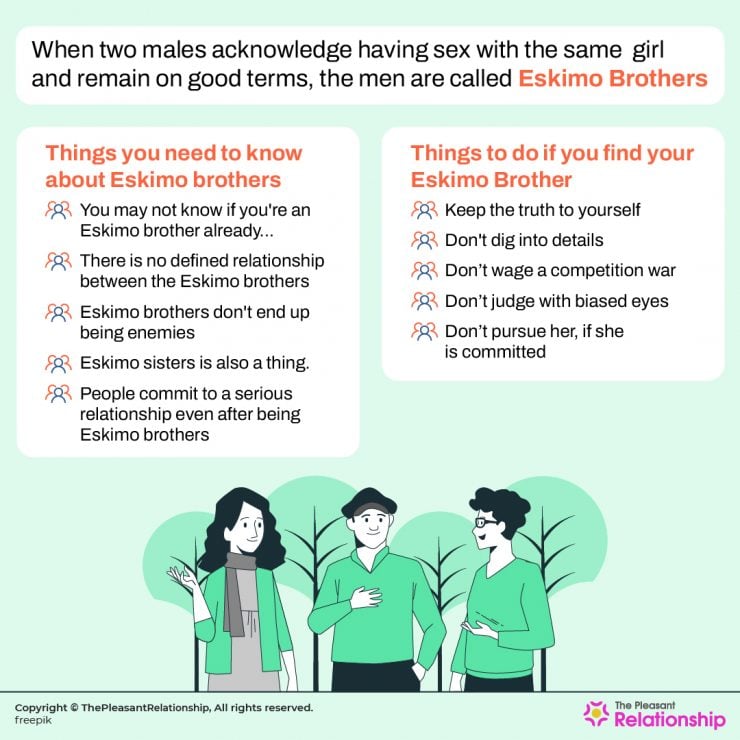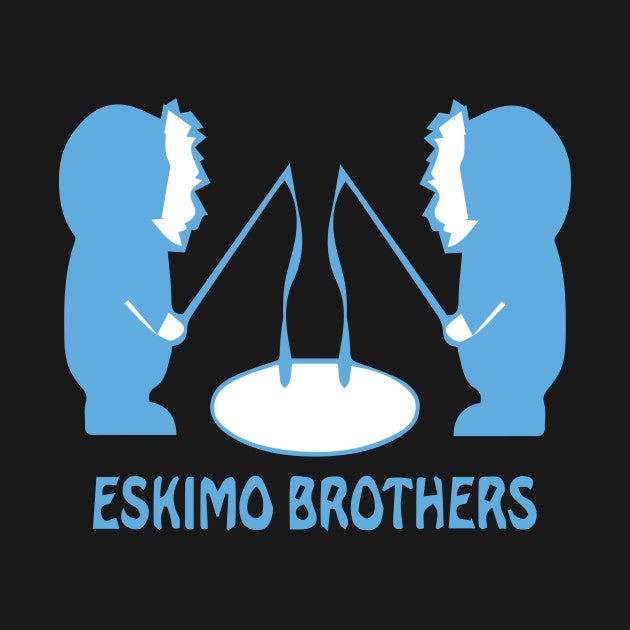Ever heard of "Eskimo Brothers," and wondered what it truly signifies? The term, a controversial piece of slang, refers to two men who have, at different times, been sexually intimate with the same woman, sparking discussions about its implications, origins, and the sensitivities it carries.
The phrase "Eskimo brothers," popularized in the early 2000s, particularly within online communities and, later, by the FX show "The League," has stirred debate due to its potential to be seen as offensive, and its origin is somewhat clouded in uncertainty. The term's usage has become widespread enough to warrant a deeper dive into its layers of meaning, potential offense, and the cultural context it resides in. The term itself appears to have evolved, becoming a means of acknowledging a shared past experience, sometimes humorous but frequently laden with undertones.
While it appears simple on the surface, the idea of "Eskimo brothers" has prompted conversations about the nuances of relationships, the ethics of language, and the way we navigate shared experiences. It is a word that, much like many others in modern society, requires careful consideration, and an understanding of its evolution over time.
To delve deeper into this concept, let's unpack some key elements: The primary definition of "Eskimo brothers" is undeniably linked to sexual history. It is, at its core, a term describing two males who have shared a sexual partner. It is important to acknowledge this. This is the baseline understanding around which all other interpretations and reactions revolve. The term suggests a kind of connection. This is based on a shared experience, albeit one that is sexually intimate. Some might view this shared experience as a bonding point, while others might find it trivial or even distasteful. The very existence of the term suggests that there is a certain awareness of this shared experience.
This is where the cultural impact of the phrase becomes really interesting, and sometimes problematic. "Eskimo brothers" is often used in a casual or lighthearted manner. It is not meant to be taken seriously, but it is still a phrase that carries weight. It has been incorporated into the lexicon of online communities and pop culture, particularly in the early 2000s. Shows such as "The League" helped cement its place in the mainstream consciousness, using it as a source of comedy and narrative development. This popularization, however, also raises questions about the term's impact, particularly its potential to trivialize the experiences of those involved and to objectify women.
The phrases potential for offense lies primarily in its connection to potentially insensitive cultural references and its capacity to be interpreted as misogynistic. The terms reference to Inuit and Aleutian cultures has been criticized. This is due to the way it misrepresents cultural practices. The term can also be viewed as misogynistic. This is due to the fact that it reduces a woman to a shared object of sexual experience, instead of acknowledging her as an individual. It's important to approach the term with a critical eye, acknowledging its possible connotations.
The term's application extends beyond the confines of personal relationships; it is also connected to specific elements within online communities. The concept of the "Eskimo Brothers Database" and related ideas show how the term has been embraced by some to create a sense of community. Despite this, it's critical to be aware of the potential pitfalls, such as the risk of objectifying women and the simplification of human relationships. Understanding how the term operates inside these communities is critical to understanding its place in society.
While the term is relatively widespread, it's interesting to consider the absence of a genuine relationship, despite pop culture depictions that may suggest otherwise. There is no implied brotherhood. The term simply acknowledges a shared sexual history. The usage is more about acknowledging a commonality than about establishing a relationship. In most cases, it is about an understanding or awareness of events from the past. If anything, the truth may be a shared avoidance of the subject.
Where does the term come from? This is not easily answered and is shrouded in some speculation. The term is widely attributed to a misunderstanding of Inuit and Aleutian cultural practices, which included forms of polygamy and polyamory. It's a term that has likely stemmed from the inaccurate portrayal of cultural practices. Its important to note this history to understand the terms potentially offensive nature and the need to address its problematic roots.
Alternatives to the term are crucial. While "Eskimo brothers" may be part of casual conversation, being mindful of its potential implications is essential. Instead of using this phrase, you can take other routes. Discussions about prior relationships do not always need to use loaded language. It's possible to discuss past experiences in a way that is respectful of all people. Using more sensitive and descriptive language is preferable. This includes the potential to eliminate the need to use any slang at all. Understanding the problems of the term can contribute to the language's greater sensitivity.
The term "Eskimo brothers," although well-known, has a complex position in popular culture. Understanding this means more than just learning the definition; it means recognizing the term's sensitive nature, historical roots, and potential ethical issues. While the term may continue to be used, a deeper understanding is critical to using it properly and promoting respectful conversations. It requires a clear understanding of its implications and a dedication to using more respectful and delicate language when discussing personal experiences and relationships. The phrase is a good example of the challenges and sensitivities of today's conversations.
In the end, the term "Eskimo brothers" is more than just a phrase; it's a reflection of our society's changing norms and our ongoing work to develop more sensitive, respectful, and comprehensive communication methods.


